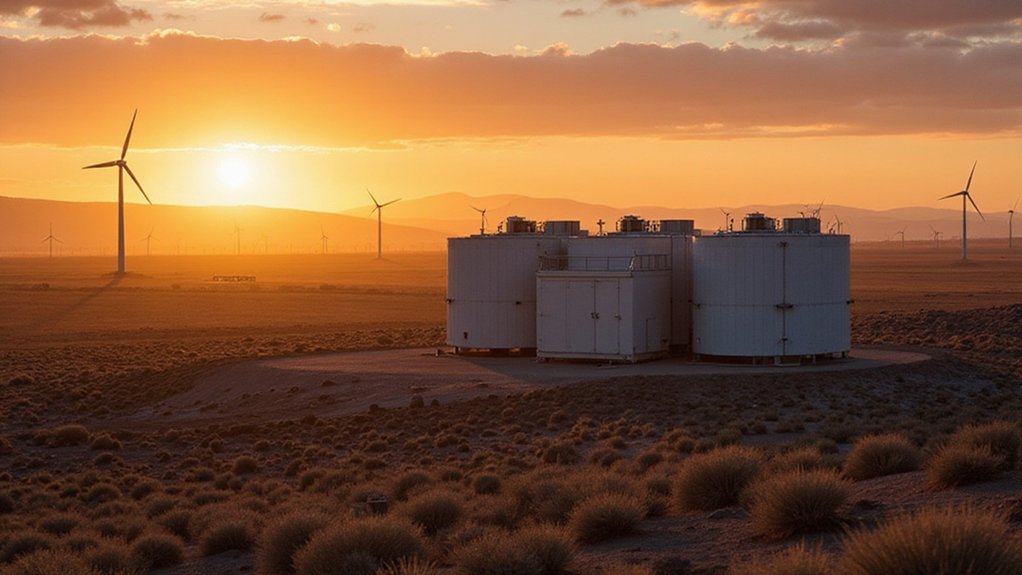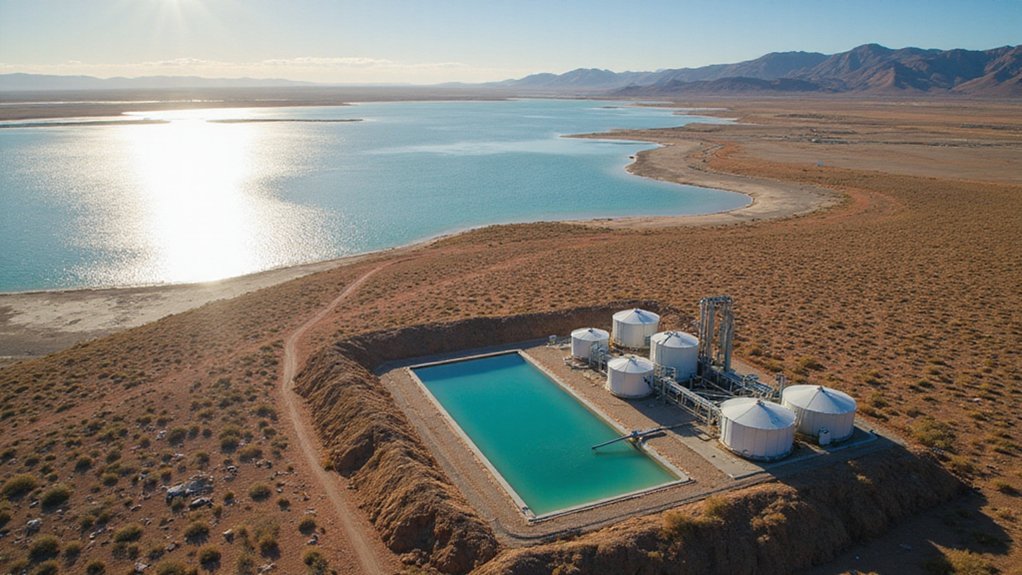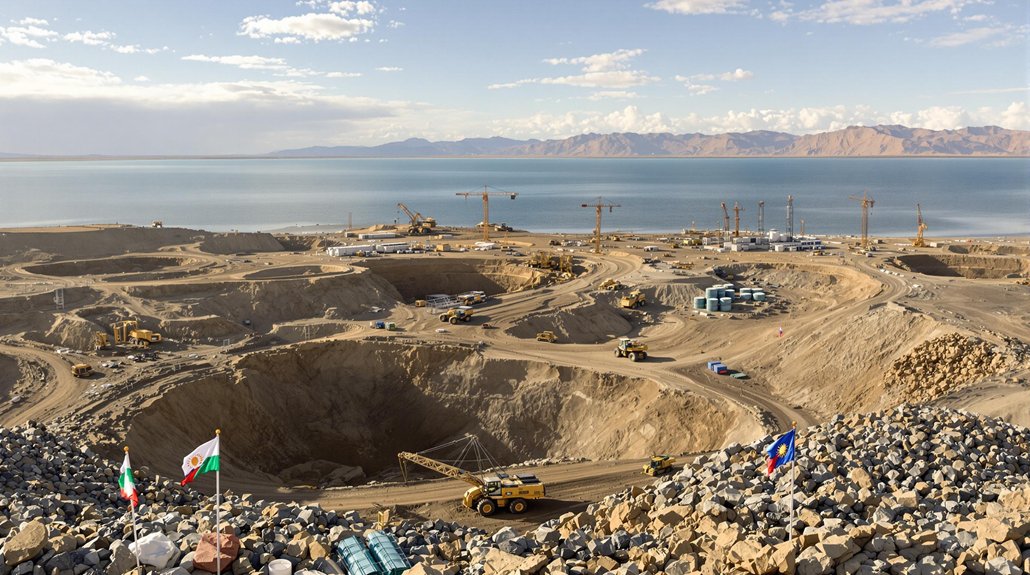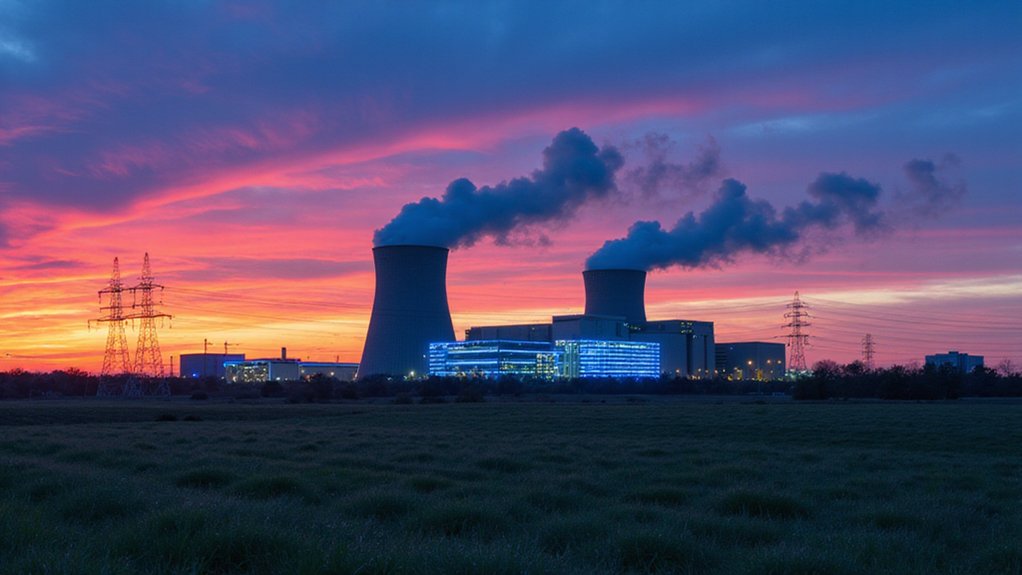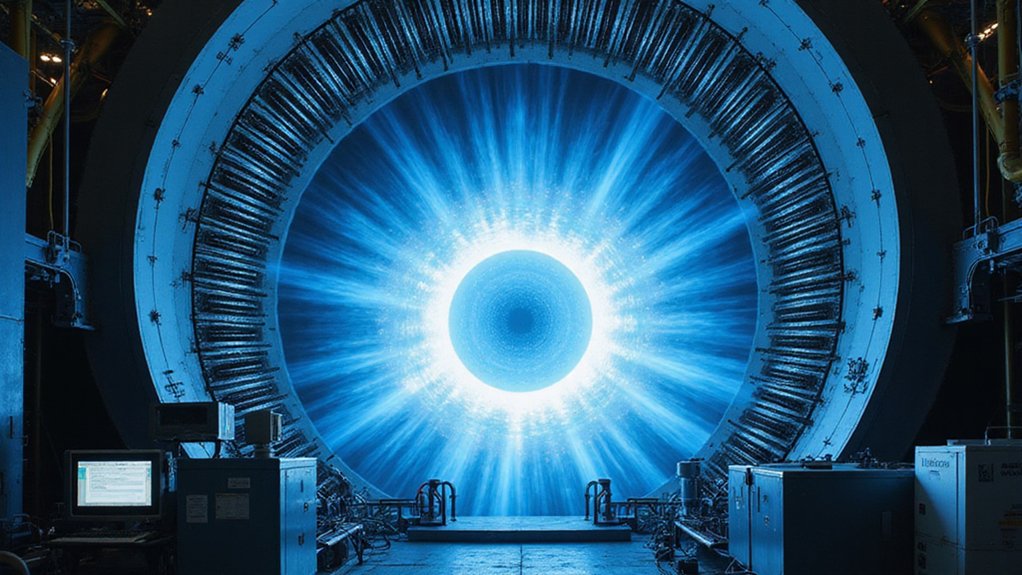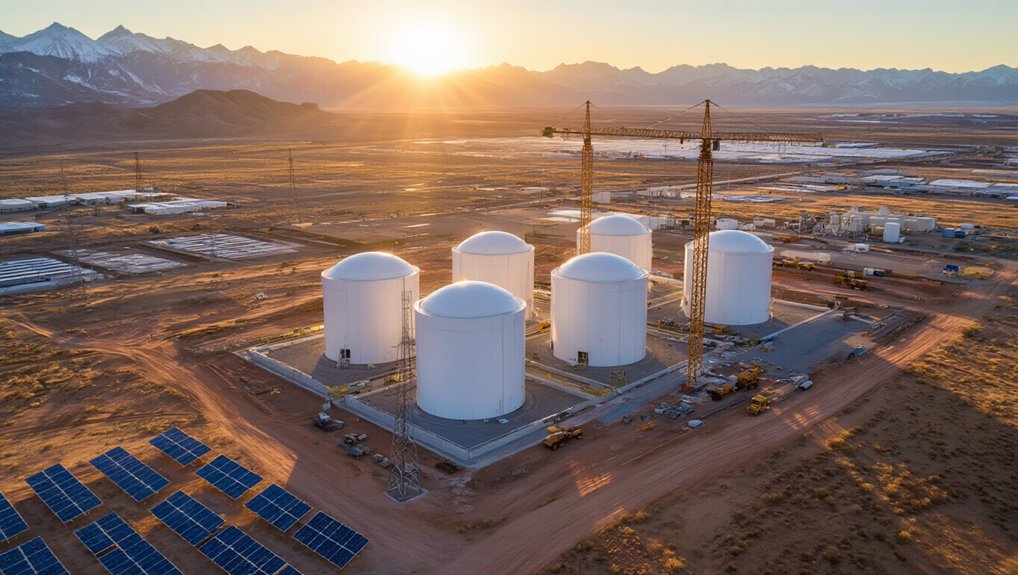A quiet upheaval is brewing in the sagebrush of Idaho. The state that pioneered nuclear energy is doubling down on its atomic legacy, potentially rendering massive wind farm proposals obsolete. Talk about a plot twist.
Idaho National Laboratory (INL) isn’t just any research facility. It’s America’s nuclear playground, home to over 50 reactors throughout its history—more than anywhere else on the planet. Remember 1951? While most Americans were watching I Love Lucy, Idaho was casually generating the world’s first usable electricity from nuclear power.
Now the nuclear stakes are getting higher. A new project in Jerome County aims to construct six small modular reactors on just 40 acres—land previously eyed for the controversial Lava Ridge wind project. These compact powerhouses would pump out 462 megawatts of electricity. Enough juice for about 400,000 homes. No wind required.
Idaho’s nuclear renaissance packs 462 megawatts into a postage stamp while wind turbines scramble for breathing room.
This shift didn’t happen overnight. In April 2025, Idaho and the Department of Energy inked a waiver to the 1995 Settlement Agreement, fundamentally giving nuclear research more breathing room. Bureaucracy at its finest, but with actual results this time.
Nuclear power doesn’t mess around. Unlike those giant pinwheels dotting the terrain, these facilities deliver consistent baseload power. Rain or shine. Day or night. They don’t care about the weather forecast.
The stakes got even higher when the feds announced plans to ship a high-burnup spent nuclear fuel cask to Idaho by fall 2027. The specialized Atlas railcar will transport this research cask safely to INL for critical examinations. Not exactly a welcome gift, but critical for research on extended storage safety.
Let’s be real—nuclear power isn’t perfect. But neither are hundreds of 740-foot wind turbines sprawling across the terrain. The choice? A compact 40-acre nuclear facility versus wind farms stretching to the horizon. The nuclear proposal represents a dramatic improvement in land efficiency compared to the Lava Ridge project’s footprint, which would have consumed nearly 200,000 acres for similar power output.
For a state that’s been splitting atoms since Harry Truman was president, maybe the future looks a lot like the past. Just smaller, safer, and considerably more powerful. With coal’s market share dropping precipitously since 1980, nuclear energy emerges as a reliable alternative to both fossil fuels and expansive renewable installations. Idaho’s nuclear transformation isn’t coming—it’s already here.
References
- https://gov.idaho.gov/pressrelease/idaho-and-trump-administration-sign-agreement-to-support-u-s-nuclear-energy-future/
- https://www.kivitv.com/jerome/nuclear-power-proposal-emerges-for-jerome-county-site-where-controversial-wind-project-stalled
- https://www.ans.org/news/2025-07-08/article-7178/doe-on-track-to-deliver-highburnup-snf-to-idaho-by-2027/
- https://inl.gov/news-release/experimental-breeder-reactor-i-atomic-museum-opens-may-23-for-2025-season/
- https://www.whitehouse.gov/presidential-actions/2025/05/reforming-nuclear-reactor-testing-at-the-department-of-energy/
